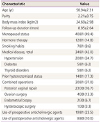1. Lee KS, Sung HH, Na S, Choo MS. Prevalence of urinary incontinence in Korean women: results of a National Health Interview Survey. World J Urol. 2008; 26:179–185.


2. Laumann EO, Paik A, Rosen RC. Sexual dysfunction in the United States: prevalence and predictors. JAMA. 1999; 281:537–544.

3. Çayan S, Yaman Ö, Orhan İ, Usta M, Başar M, Resim S, et al. Prevalence of sexual dysfunction and urinary incontinence and associated risk factors in Turkish women. Eur J Obstet Gynecol Reprod Biol. 2016; 203:303–308.


4. DeLancey JO. Structural aspects of the extrinsic continence mechanism. Obstet Gynecol. 1988; 72:296–301.
5. DeLancey JO. Anatomy and physiology of urinary continence. Clin Obstet Gynecol. 1990; 33:298–307.


6. DeLancey JO. Functional anatomy of the female lower urinary tract and pelvic floor. Ciba Found Symp. 1990; 151:57–69.


8. Dursun M, Otunctemur A, Ozbek E, Cakir SS, Polat EC. Impact of the transobturator tape procedure on sexual function in women with stress urinary incontinence. J Obstet Gynaecol Res. 2013; 39:831–835.

10. Elzevier HW, Putter H, Delaere KP, Venema PL, Lycklama à Nijeholt AA, Pelger RC. Female sexual function after surgery for stress urinary incontinence: transobturator suburethral tape vs. tension-free vaginal tape obturator. J Sex Med. 2008; 5:400–406.


11. El-Enen MA, Ragb M, El Gamasy AN, El-Ashry O, El-Sharaby M, Elbadawy A, et al. Sexual function among women with stress incontinence after using transobturator vaginal tape, and its correlation with patient's expectations. BJU Int. 2009; 104:1118–1123.


12. Ko YH, Song CH, Choi JW, Jung HC, Song PH. Effect on sexual function of patients and patients' spouses after midurethral sling procedure for stress urinary incontinence: a prospective single center study. Low Urin Tract Symptoms. 2016; 8:182–185.


13. Pace G, Vicentini C. Female sexual function evaluation of the tension-free vaginal tape (TVT) and transobturator suburethral tape (TOT) incontinence surgery: results of a prospective study. J Sex Med. 2008; 5:387–393.


14. Liang CC, Tseng LH, Lo TS, Lin YH, Lin YJ, Chang SD. Sexual function following outside-in transobturator midurethral sling procedures: a prospective study. Int Urogynecol J Pelvic Floor Dysfunct. 2012; 23:1693–1698.

15. Filocamo MT, Serati M, Frumenzio E, Li Marzi V, Cattoni E, Champagne A, et al. The impact of mid-urethral slings for the treatment of urodynamic stress incontinence on female sexual function: a multicenter prospective study. J Sex Med. 2011; 8:2002–2008.


16. Bump RC, Mattiasson A, Bø K, Brubaker LP, DeLancey JO, Klarskov P, et al. The standardization of terminology of female pelvic organ prolapse and pelvic floor dysfunction. Am J Obstet Gynecol. 1996; 175:10–17.


18. Yoo EH, Jeon MJ, Ahn KH, Bai SW. Translation and linguistic validation of Korean version of short form of the Pelvic Organ Prolapse/Urinary Incontinence Sexual Questionnaire(PISQ-12). Korean J Urogynecol. 2012; 14:42–47.
19. Jha S, Ammenbal M, Metwally M. Impact of incontinence surgery on sexual function: a systematic review and meta-analysis. J Sex Med. 2012; 9:34–43.


20. Serati M, Salvatore S, Uccella S, Nappi RE, Bolis P. Female urinary incontinence during intercourse: a review on an understudied problem for women's sexuality. J Sex Med. 2009; 6:40–48.


21. Hilton P. Urinary incontinence during sexual intercourse: a common, but rarely volunteered, symptom. Br J Obstet Gynaecol. 1988; 95:377–381.


22. Serati M, Salvatore S, Uccella S, Cromi A, Khullar V, Cardozo L, et al. Urinary incontinence at orgasm: relation to detrusor overactivity and treatment efficacy. Eur Urol. 2008; 54:911–915.


23. Khan Z, Bhola A, Starer P. Urinary incontinence during orgasm. Urology. 1988; 31:279–282.


24. El-Azab AS, Yousef HA, Seifeldein GS. Coital incontinence: relation to detrusor overactivity and stress incontinence. Neurourol Urodyn. 2011; 30:520–524.













 PDF
PDF ePub
ePub Citation
Citation Print
Print



 XML Download
XML Download